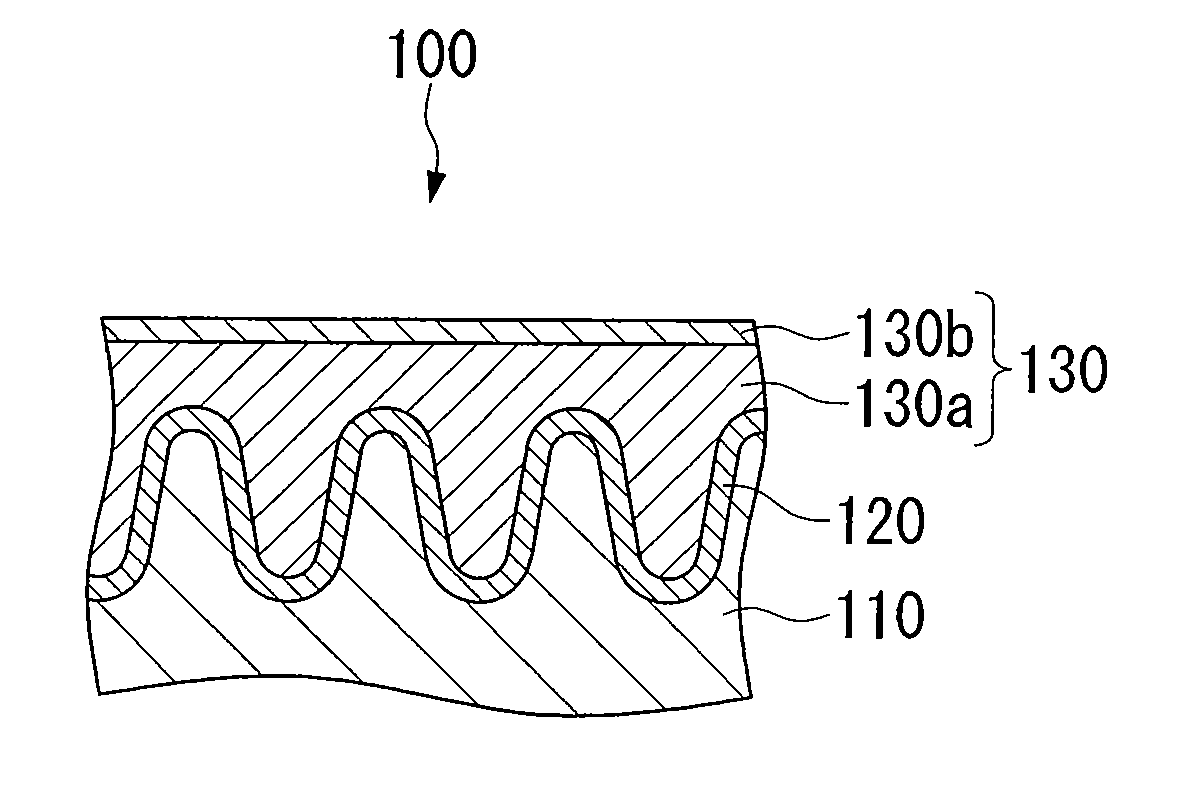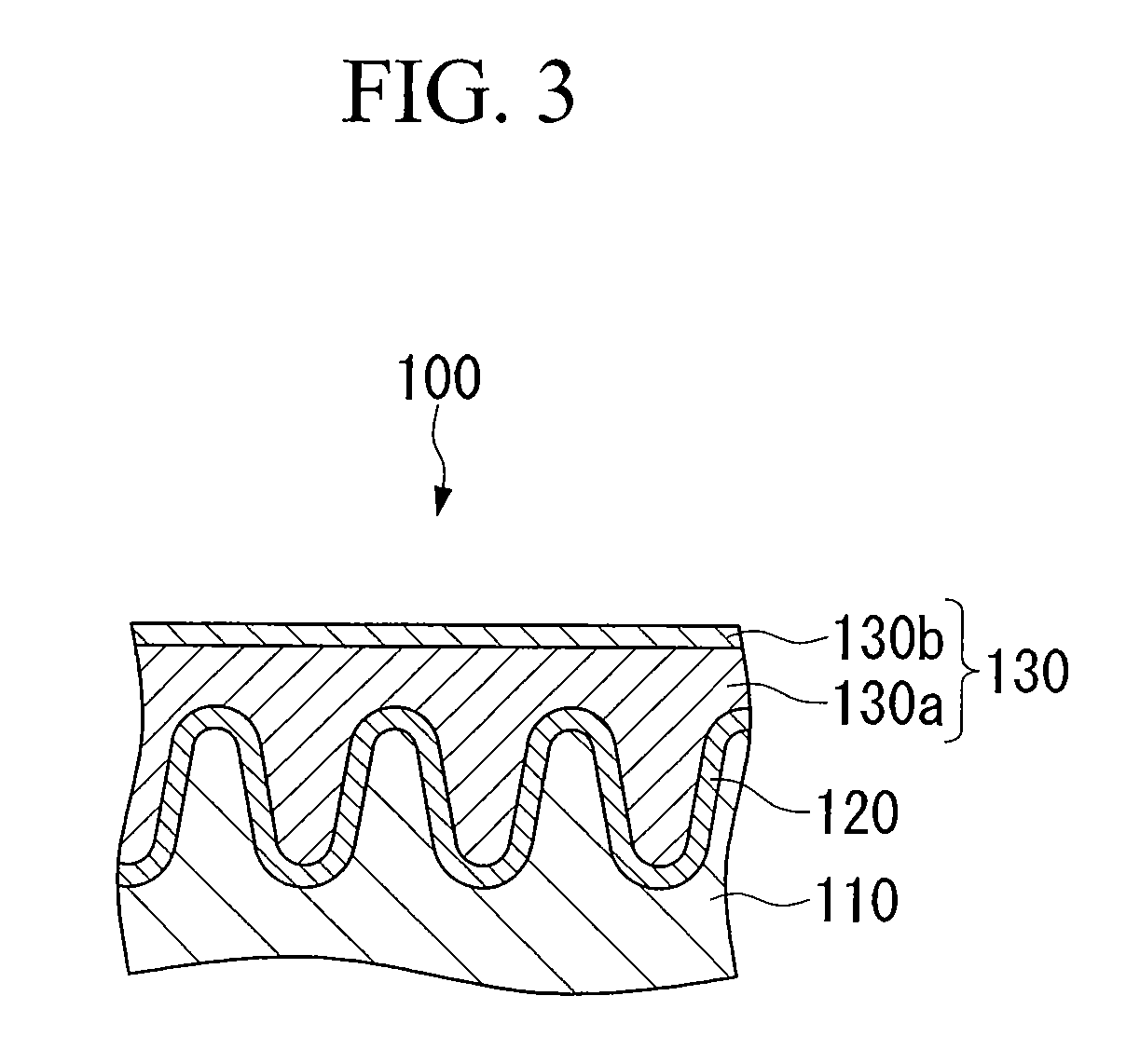Conductive composition and production method thereof, antistatic coating material, antistatic coating, antistatic film, optical filter, and optical information recording medium, and capacitors and production method thereof
a technology of conductive polymer and composition, which is applied in the direction of non-metal conductors, photosensitive materials, instruments, etc., can solve the problems of difficult mass production, difficult to form a uniform film of a conjugated conductive polymer, and difficult to achieve high conductivity, etc., to achieve excellent conductivity, simple production method, and easy mixing with essential components
- Summary
- Abstract
- Description
- Claims
- Application Information
AI Technical Summary
Benefits of technology
Problems solved by technology
Method used
Image
Examples
preparation example 1
Synthesis of Poly(Ethyl Methacrylate Sulfonic Acid) (PMAS)
[0228]216 g of ethyl methacrylate sodium sulfonate was dissolved in 1000 ml of ion-exchanged water, 1.14 g of ammonium persulfate previously dissolved in 10 ml of water beforehand was added dropwise over 20 minutes while stirring at 80° C., and the mixture was continuously stirred for an additional 12 hours.
[0229]1000 ml of sulfuric acid diluted to 10% by weight was added to the obtained poly (ethyl methacrylate sodium sulfonate) solution, about 1000 ml of the solution was removed by an ultrafiltration method, 2000 ml of ion-exchanged water was added to the residue, and about 2000 ml of the solution was removed by the ultrafiltration method. The above ultrafiltration operation was repeated three times.
[0230]Subsequently, about 2000 ml of ion-exchanged water was added to the obtained filtrate and about 2000 ml of the solution was removed by the ultrafiltration method. This ultrafiltration operation was repeated three times.
[02...
preparation example 2
Synthesis of Polystyrene Sulfonic Acid
[0237]206 g of sodium styrene sulfonate was dissolved in 1000 ml of ion-exchanged water, 1.14 g of ammonium persulfate previously dissolved in 10 ml of water beforehand was added dropwise over 20 minutes while stirring at 80° C., and the mixture was continuously stirred for an additional 12 hours.
[0238]1000 ml of sulfuric acid diluted to 10% by weight was added to the obtained poly(sodium styrene sulfonate) solution, about 1000 ml of the solution was removed by the ultrafiltration method, 2000 ml of ion-exchanged water was added to the residue, and about 2000 ml of the solution was removed by the ultrafiltration method. The above ultrafiltration operation was repeated three times.
[0239]Subsequently, about 2000 ml of ion-exchanged water was added to the obtained filtrate and about 2000 ml of the solution was removed by the ultrafiltration method. This ultrafiltration operation was repeated three times.
[0240]Water in the obtained solution was remo...
preparation example 3
[0241]14.2 g of 3,4-ethylenedioxythiophene and a solution obtained by dissolving 36.7 g of polystyrene sulfonic acid in 2000 ml of ion-exchanged water were mixed at 20° C.
[0242]This mixed solution was maintained to 20° C., 29.64 g of ammonium persulfate dissolved in 200 ml of ion-exchanged water and 8.0 g of an oxidation catalyst solution of ferric sulfate were slowly added while stirring, and then the mixture was stirred and reacted for 3 hours.
[0243]2000 ml of ion-exchanged water was added to the obtained solution, and about 2000 ml of solution was removed by the ultrafiltration method. This operation was repeated three times.
[0244]200 ml of sulfuric acid diluted to 10% by weight and 2000 ml of ion-exchanged water were added to the obtained solution, about 2000 ml of the solution was removed by the ultrafiltration method, 2000 ml of ion-exchanged water was added to the residue, and about 2000 ml of the solution was removed by the ultrafiltration method. The above ultrafiltration o...
PUM
| Property | Measurement | Unit |
|---|---|---|
| total light transmittance | aaaaa | aaaaa |
| total light transmittance | aaaaa | aaaaa |
| total light transmittance | aaaaa | aaaaa |
Abstract
Description
Claims
Application Information
 Login to View More
Login to View More - R&D
- Intellectual Property
- Life Sciences
- Materials
- Tech Scout
- Unparalleled Data Quality
- Higher Quality Content
- 60% Fewer Hallucinations
Browse by: Latest US Patents, China's latest patents, Technical Efficacy Thesaurus, Application Domain, Technology Topic, Popular Technical Reports.
© 2025 PatSnap. All rights reserved.Legal|Privacy policy|Modern Slavery Act Transparency Statement|Sitemap|About US| Contact US: help@patsnap.com



